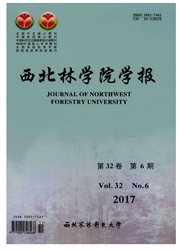

 中文摘要:
中文摘要:
生态旅游开发适宜性评价是旅游资源开发的基础。基于GIS空间分析功能,采用因子叠加法和景观可视敏感度法评价棋盘山生态旅游开发适宜性。采用坡度、距离水库的远近、土地利用、水库景观可视敏感度和河流景观可视敏感度作为单因子,综合评价了研究区的生态旅游开发适宜性,将适宜性分为很适宜、适宜、较不适宜、不适宜和很不适宜5类。结果表明,最适宜生态旅游用地和适宜生态旅游用地占研究区的42.79%,说明本区的生态旅游资源丰富,适宜进行生态旅游开发。较不适宜区占研究区的比重最大(30.76%),这些区域可以作为潜在旅游开发区,如果管理措施得当,将会转变为可利用资源,否则将会使生态环境恶化,进而可能影响到现有生态旅游资源的开发和利用。同时也提出在资源开发的同时,也要注意保护环境,使其发挥最大的景观价值。
 英文摘要:
英文摘要:
Ecological suitability evaluation for eco-tourism is a prerequisite and the basis of the eco-tourism development.Based on the evaluation of multi-factors and the landscape visual sensitivity,the ecological suitability for eco-tourism in Qipanshan was evaluated using the ArcGIS spatial analysis function.The factors included topography,distance to Qipanshan reservoir,landuse,landscape visual sensitivity to reservoir and river.According to comprehensive analysis of the score of ecological suitability for eco-tourism development,from high score to low,the study area was classified into five grades: the most suitable area,the suitable area,the relatively unsuitable area,the unsuitable area,and the most unsuitable area.The results indicated that the most suitable and suitable area accounted for 42.79% of the total area,suggesting the eco-tourism resource for this region is abundant,and the area is suitable for eco-tourism development.The relatively unsuitable land accounted for most proportion of the landscape(30.76%),and can be developed into eco-tourism zone if the policy was appropriate.But it should be pointed that environment protection should be implemented while the eco-tourism development was carried out.
 同期刊论文项目
同期刊论文项目
 同项目期刊论文
同项目期刊论文
 Application of land-use change model in guiding regional planning: A case study in Hun-Taizi River W
Application of land-use change model in guiding regional planning: A case study in Hun-Taizi River W Land Use and Land Cover Change Analysis and Prediction in the Upper Reaches of the Minjiang River, C
Land Use and Land Cover Change Analysis and Prediction in the Upper Reaches of the Minjiang River, C 期刊信息
期刊信息
